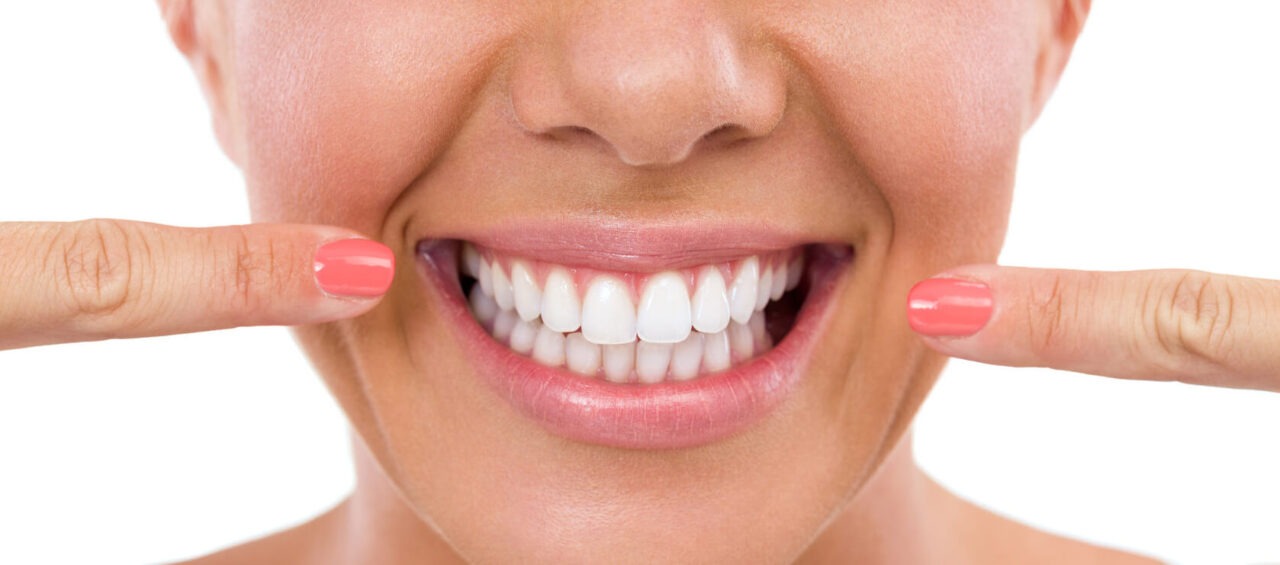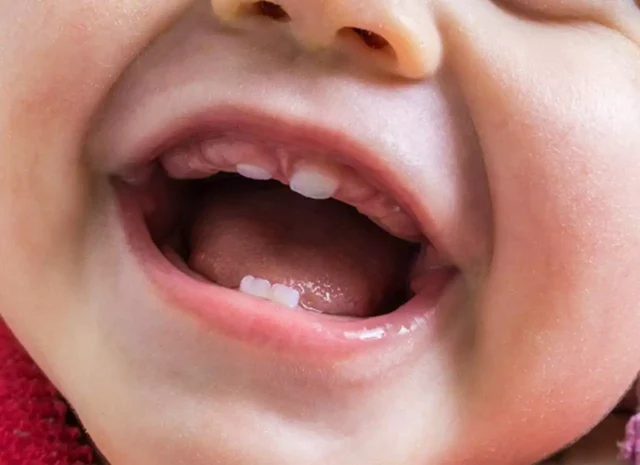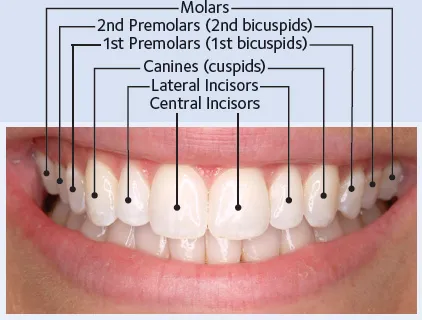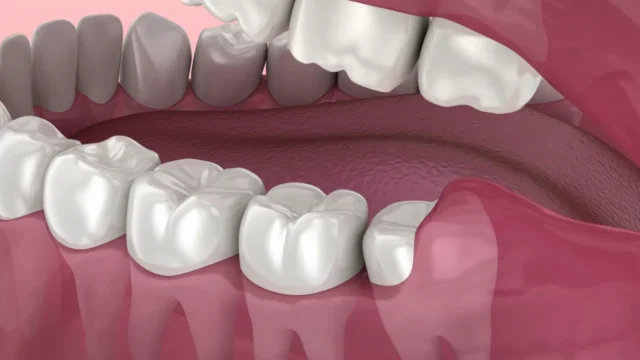When it comes to human anatomy, few things are as universal yet often overlooked as our teeth. Most adults have a complete set of 32 teeth, but how we get there is a fascinating journey that begins in childhood. Understanding the types and numbers of teeth humans have, can shed light on both our dental health and evolutionary history.
The Development of Teeth
Baby Teeth: The Beginning
Humans are born without teeth, but around the age of six months, the process of teething begins. This stage, also known as primary dentition, typically features the emergence of 20 baby teeth. It is also known as primary or deciduous teeth and sometimes called Milk Teeth. Therefore, children from six months to three years, will have these sets of teeth before they fall out and give way to permanent teeth.
These teeth serve several essential functions, including:
- Allowing infants to chew food.
- Helping in speech development.
- Guiding the growth of adult teeth that will replace them.
By the age of three, most children will have developed their complete sets of baby teeth, which consists of:
- 10 upper teeth
- 10 lower teeth
The Transition from Baby Teeth to Adult Teeth
Now, let’s take a closer look at how our smile starts out. Children are born with no visible teeth, but by about six months of age, the first baby teeth begin to emerge. This set of primary teeth typically includes:
- Incisors (8 total): The first to come in and the first to go, these teeth are crucial for biting into food.
- Canines (4 total): Yes, even the little ones have canine teeth, which usually emerge around 16-20 months.
- Premolars (0 total): Interestingly, children have no premolars; they’re only part of the adult set, so they don’t have these types of molars.
- Molars (8 total): Kids will also have primary molars, which help with chewing until they’re replaced by adult molars.
Children usually have a total of 20 baby teeth. These primary teeth begin to fall out around age six, making space for permanent adult teeth to come in. When the transition is complete, most kids will have those full 32 adult teeth. Unless we’re talking about wisdom teeth, which might not show up or might need to be removed.
Full Set of Permanent Teeth: Types of Teeth
The adult teeth can be classified into different types, each serving a unique purpose.
The complete set of permanent teeth is typically composed of:
- Incisors (8 total): These are the front teeth used for cutting food. There are four incisors in the upper jaw and four in the lower jaw. Their primary function is slicing through soft food. Amongst these, you have the Central incisors and the Lateral incisors.
- Canines (4 total): Located next to the lateral incisors, these canine teeth are essential for tearing food. Adults have two canines on the top and two on the bottom. They are particularly useful for gripping and ripping tougher food items.
- Premolars (8 total): These teeth, also known as bicuspids, have a flat surface that helps in crushing and grinding food. There are two premolars on each side of the jaw. They are in both the upper and lower teeth, making them vital for the chewing process.
- Molars (12 total): These are the large, flat teeth at the back of the mouth. With three molars on each side of the upper and lower jaws (including the wisdom teeth), they are designed to bear the brunt of chewing and grinding, breaking down food into smaller particles to facilitate digestion.
These are the 4 main types of teeth humans have.
The Role of Wisdom Teeth
Among the 32 adult permanent teeth, the molars include the third set known as wisdom teeth. Typically emerging in late adolescence or early adulthood, wisdom teeth often come in between the ages of 17 and 25. These teeth are referred to as “wisdom teeth” because they generally appear at an age when individuals are considered to be more mature or ‘wiser.’
Why Do We Have Wisdom Teeth?
Evolutionarily, our ancestors had larger jaws with more teeth to help them eat a diet that consisted of coarse vegetation and raw meat. Wisdom teeth were useful for grinding down these tough foods. However, as human diets have changed and as our jaws have evolved to become smaller. Also, the need for these extra molars has greatly reduced. This has led to a common issue wherein many people do not have enough space in their mouths to accommodate these additional teeth.
Problems Associated with Wisdom Teeth
For many individuals, wisdom molar teeth can lead to dental complications. Some common problems include:
- Impaction: When there isn’t enough space in the mouth, wisdom teeth can become trapped beneath the gum line. This can lead to pain, swelling, and infection.
- Crowding: Wisdom teeth can push against adjacent teeth, causing misalignment and crowding of the other teeth, which can offset orthodontic work.
- Cavities and Gum Disease: Part of the issue with wisdom teeth is that they are located at the back of the mouth, making them harder to clean properly. This can lead to a higher risk of cavities and gum disease.
Factors that Affect The Number of Teeth Humans Have
While most adults are expected to have 32 teeth, several factors can influence this number; including genetics, health conditions, and lifestyle choices.
1. Genetic Variability
Genetics plays a significant role in determining how many teeth a person has. Some individuals may inherit traits that result in missing teeth, referred to as hypodontia (This is different from Tooth Loss). In some cases, people might be born without certain teeth, leading to a count lower than the standard 32. Conversely, some may have extra teeth, known as hyperdontia, which can also cause complications.
2. Oral Health Issues
Certain oral health conditions can impact the number of teeth. For instance, severe tooth decay or periodontal disease can result in tooth loss. Regular dental care and maintaining good oral hygiene can help prevent these issues, preserving the natural tooth count.
3. Extraction
As mentioned, wisdom teeth often require extraction due to complications such as impaction or crowding. Additionally, teeth that are severely decayed or damaged may need to be extracted, which decreases an individual’s total tooth count.
4. Age
As we age, we risk tooth decay. Many adults, particularly those over 65, may experience a significant reduction in their total number of teeth. Factors such as inadequate dental care and pre-existing medical conditions can also contribute to tooth loss. Dentures or implants often become necessary for older adults, helping them maintain functionality even with a reduced number of natural teeth.
Summary on How Many Teeth Do Humans Have
In summary, most adults typically have 32 teeth, including the incisors, canines, premolars, and molars, with the last set being the wisdom teeth. However, various elements—such as genetics, dental health, and age—can result in a different number of how many teeth humans have. Understanding human dentition and being aware of the factors that affect it can help individuals to prioritize their oral health and seek preventive measures early on.
Whether you’re crunching on carrots or chowing down on pizza, healthy teeth are crucial for a satisfying meal. Remember to love your teeth (and visit the dentist regularly) to keep that smile shining brightly and your teeth healthy!
Contact Parla Clinics for a free Dental Consultation
FAQs on How Many Teeth Do Humans Have
Q1: How many teeth do adults typically have?
A: Adults usually have a total of 32 teeth, which includes incisors, canines, premolars, molars, and wisdom teeth.
Q2: How many teeth do children have?
A: Children typically have 20 baby teeth, also known as primary teeth, which eventually fall out and are replaced by adult teeth.
Q3: At what age do children start losing their baby teeth?
A: Children generally begin to lose their baby teeth around the age of 6. This process can continue until they are about 12 or 13 years old.
Q4: Why do some adults have fewer than 32 teeth?
A: Some adults may have fewer than 32 teeth due to the removal of one or more wisdom teeth, tooth decay, or other dental issues that may necessitate extraction.
Q5: What are wisdom teeth and why do they often need to be removed?
A: Wisdom teeth, or third molars, typically emerge in late adolescence or early adulthood. They often need to be removed due to impaction, crowding, or the difficulty of cleaning them. These can lead to dental complications.
Q6: Is it possible to have extra teeth?
A: Yes, some individuals may have a condition known as hyperdontia, which causes the development of extra teeth. They are also known as supernumerary teeth.
Q7: What happens if wisdom teeth are not removed when they cause problems?
A: If wisdom teeth are not removed, they may lead to pain, infections, dental crowding, or other complications that could affect overall dental health.
Q8: Are all adult teeth the same size?
A: No, adult teeth vary in size and shape. Incisors are typically flat and chisel-shaped, canines are pointed and used for tearing. Premolars and molars are broader and designed for grinding food.
By understanding these common questions and concerns about human teeth, individuals can make informed decisions about their oral health and care.






